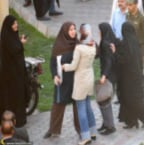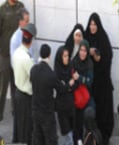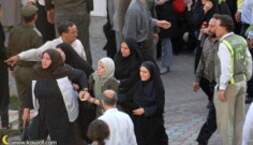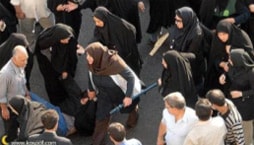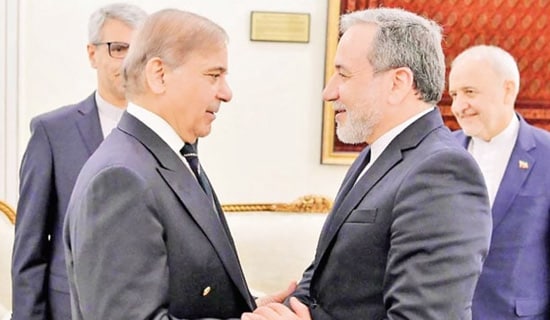Introduction
Iranian human rights activists recently initiated a "One Million Signatures Demanding Changes to Discriminatory Laws" campaign, aimed at fighting legal discrimination against women in Iran. According to one of the initiators, journalist Maryam Hosseinkhah, the campaign aims to collect one million signatures by June 2007. Its planned activities include door-to-door petitioning as well as conferences and rallies. The campaign also operates a website (http://we-change.org ) on which Iranian men and women over 18, inside and outside Iran, are invited to sign the campaign petition. [1]
The campaign was to be officially launched on August 27, 2006, with a seminar titled "The Impact of Laws on Women's Lives," but the Iranian security forces prevented the event from taking place. This is a characteristic example of the hostile attitude taken by the Iranian security forces towards activities of this sort. A June 12 women's protest in Tehran was likewise violently broken up even before it could get underway, by women activists from the Basij, [2] who brutally beat the demonstrators and prevented them from holding up their signs advocating equal rights for Iranian women (see photographs below). The demonstration ended with the mass arrest of about 70 men and women - human rights activists, students, intellectuals and journalists. [3]
|
|
|
|
|
|
|
|
|
|
The Iranian authorities also announced recently that Malak Ghorbani, a 34-year-old Kurdish woman and mother of two who has been convicted of adultery, has been sentenced to death by public stoning. This punishment is still used in Iran against women and girls convicted of adultery or of having inappropriate relations with men, and is sometimes meted out even to rape victims. On the day of her punishment, the woman is wrapped in sheets with her hands tied behind her back. She is then placed in a pit filled with earth, with only her head showing, and the members of the community are invited to hurl rocks at her until she dies. The size of the rocks is mandated by law so as to ensure that the condemned individual is subjected to the maximum amount of pain. [4]
The reformist website www.metatransparent.com posted a report by human rights activist and senior Amnesty International executive Widad Aqrawi about two additional Iranian women who have been recently sentenced to death. One, Delara Darabi, 19, was sentenced to death by hanging for a murder she allegedly committed at the age of 17. This is even though Iran is party to international treaties that expressly prohibit the death penalty for crimes committed by minors under 18. Darabi claims that she confessed to the murder in order to protect the real culprit from execution, believing that as a minor as she could not be sentenced to death. The other, Ashraf Kolhari, a 37-year-old mother of four, was sentenced to 15 years' imprisonment for participating in the murder of her husband, and sentenced to death by stoning for adultery. Kolhari allegedly had an affair with a married man after the court refused her request for divorce; this refusal was reportedly because she had children and must therefore continue to reside with her husband. [5]
In May 2006, Zohreh Tabibzadeh Nouri, advisor to Iranian President Mahmoud Ahmadinejad, was appointed head of the IranianCenter for Women and Family Affairs. Upon taking office, she declared her philosophy, saying: "I do not deny that there are gaps in the [Iranian] law when it comes to protection of women's rights... [However,] as long as I live and remain in charge of this center, I will not let anyone sign international charters [or] declarations of international conferences on women's rights, since we can [fix] the gaps and existing problems through the Islamic faith. I see no reason to follow the unsuccessful Western model." [6]
Conversely, the prominent dissident journalist Akbar Ganji, recently released after six years in an Iranian prison, announced his intention to join the campaign for women's equality in Iran. He called on Iranian women to fight against the discriminatory laws in their country and against violence perpetrated by men against women in Iran, stating that "women's rights, and equality between men and women, are among the fundamental principles of the democratic movement." Ganji, who is currently conducting an information campaign in the West, stated that from now on, one of his campaign's major goals will be to draw attention to the status of women in Iran. [7]
Reactions to the Violent Suppression of the June 12, 2006 Demonstration
In response to the suppression of the June 12 women's demonstration in Tehran by women activists from the Basij, several journalists and social activists published articles protesting the regime's suppression of the women's movement, the institutionalized discrimination against women that takes place with the blessing and support of the Iranian clerics, and the fact that women are prevented from demonstrating and from acting to improve their legal, economic and social status. The following are excerpts from the articles.
On the Regime's Use of Policewomen against Women Demonstrators
In an article posted July 14, 2006 on the reformist Internet daily Rooz, journalist Lili Pourzand wrote against the regime's cynical ploy of exploiting women under the pretense of "involving them in society." As an example, she cites the establishment of the women-only police force used to break up demonstrations for women's rights: [8]
"...This may be the first time that the Iranian security forces have employed women trained as police [officers] to suppress demonstrations on the street. For several years now, the Iranian security forces have been recruiting women candidates and holding special courses to provide them with military training. The Iranian authorities have presented this activity as an innovation within the male-dominated system that controls the Iranian security forces, and have carried out an intensive propaganda campaign [touting this activity] as evidence of the inclusive nature of the Iranian security forces.
"But on Monday, [June 12, 2006,] we witnessed for the first time the anti-feminist achievement of this new force: Iranian women were beaten with clubs and sticks by the women of the security forces. They were very badly injured, and then were loaded onto prison buses by the policewomen, with handcuffs on their wrists...
"The Iranian policewomen usually [come] from sectors that experience all the problems [faced by] women in a patriarchal society. [So] how could they [use] their clubs to silence the peaceful outcry of the Iranian women who went out to the streets to demonstrate and demand the restoration of their rights? How could they [beat them] till they bled and [then] lead them like born criminals, handcuffed, to unfamiliar and frightening detention facilities?"
Journalist Ali Afshari also commented in a Rooz article about the regime's policy of using women to oppress women. He argued that the regime's reaction to the women's demonstration stems from its fear of the women's campaign for equal status: [9]
"The women's protest rally on June 12 this year, which was harshly broken up by the regime, was an important and momentous occasion for a number of reasons... The regime's reaction revealed [its] fears and vulnerability more than it demonstrated [its] power. The authorities are afraid that the huge potential inherent in women's power may be realized, and that is why they implement security orders and [use] intimidation, arrests and fabricated criminal lawsuits against the leading activists, all aimed at stopping this movement...
"The use of the women's police [unit] is another facet of this incident. The regime sent out women to fight [other] women demonstrating for their rights. It used the tactic of 'women against women' to camouflage its anti-feminist policy, and in order to observe the custom that 'forbids a man to attack women not from his immediate family'...
"In fact, by using this [tactic], the regime means to show that the demonstrating women do not express a demand [by] all the women in [Iranian] society, and that the [Iranian] women themselves set out to confront this movement, which they regard as 'stupefied by the West' and as deviating from the tenets of Islam. By bringing women who support the regime to the [demonstration] site, the regime meant to transform the confrontation from a women's struggle against the regime into a struggle between [two groups of] women. But [the fact that] several members of the conservative seventh Majlis objected to the violence that broke out [during the demonstration] casts doubt on the success of this policy... Beatings, clubs, handcuffs, arrests, and fabricated lawsuits will not be able to stop the clear progress of the women's movement towards growth and development."
Discrimination against Women in Iran's Personal Status Code
Journalist Lili Pourzand wrote about the discrimination against women built into the Iranian personal status code: "Most of the women [in the women's police unit] have surely experienced domestic violence themselves. Their own hearts [probably] bleed because they have no right [to sue] for divorce or for custody of their children. As women, the current employment laws present them with excessive and illogical demands. How can we believe that none among the Iranian policewomen object to being forced to live with their husbands because it is impossible for them to sue for divorce? How can we [believe] that their hearts are not bleeding because they have no right to custody of their children in case of divorce or separation? Should one of their daughters be murdered by a man, how can we believe that the mother would be happy that the blood-price paid for the murder of her daughter is half the sum paid for [the murder of] a man? And if she demands that the murderer of her daughter be punished, [will she happily accept the fact] that the law requires her to pay the murderer's family a double [sum] for her daughter's blood (that is, a sum equivalent to the full blood-price for a man)? How can we believe that the Iranian policewoman is happy to inherit only an eighth of her deceased husband's property?" [10]
Discrimination against Women in Shari'a - the Result of Stagnation in Religious Interpretation
Another Rooz article, by human rights activist and journalist Mehrangiz Kar, argued that Iranian clerics abet the ongoing institutionalized discrimination against women by preserving laws and religious customs that do not correspond to the spirit of the times. Kar states that when, for example, these clerics allow nine-year-old girls to be tried as adults, they are failing in their duty to modernize the religious rulings. [11]
"Mohammad Ali Abtahi, legal advisor to former president Khatami, declared recently that 'after Khatami was reelected president of the Republic in 2001, several Maraje' [i.e. Ayatollahs that are considered religious authorities] told him... that if any woman is [appointed to the role of] cabinet minister, they will issue a fatwa forbidding [the Iranian citizens] to pay their taxes to the government.' Abtahi added that... 'four years later, the Iraqi cabinet included five women ministers. Ayatollah [Ali] Sistani could have opposed and prevented their appointment, but the Ayatollah officially supported the cabinet...' Ayatollah Sistani was obviously aware of the snowballing [women's movement, while]... the Iranian politicians, and the Maraje' who have been associated with them for years, [continued] their historical crimes...
"The Shiite religious scholars and Maraje' in Iran have so far employed two tactics against women who have demanded their rights: [First,] they have pitched women against one another. [Second,] they have declared that the gates of ijtihad [i.e. use of personal judgement in religious ruling] are open, and that with knowledge of the [religious] rulings [regarding] women's rights, it is possible to do such wonderful things that the women of the world will be envious of the legal status of the Iranian women.
"So far, these two tactics have [only] set obstacle after obstacle [in the women's path]. The first tactic was always regarded as the government's official method, while the second came to be seen as a critical oppositionist [approach]. But even though both methods have been used in all decision-making processes for the last 27 years, no steps have been taken to improve the state laws [in ways that] benefit women. There was never any point, and there is still no point, in expecting anything from the [Maraje'], i.e. from the religious authorities that endorse the official [conservative] interpretation of the religion. The members of the second group - that is, the religious authorities who advocate a contemporary interpretation [of shari'a] - also gave rise to hopes that were never realized. They have said, and are still saying, that by applying ijtihad, the [Islamic] laws can be reexamined in light of local and contemporary needs and [in ways that] benefit women. [However,] these respectable jurists have not yet taken the risk of implementing their views, and have preferred to remain on the sidelines rather than directly confront the stagnation [of shari'a]...
"To this very day, [both] the civil law and the Islamic penal law regard a small girl of nine as a sensible adult who can be held accountable for her actions. If she commits an offense, the violent punishments detailed in the Islamic penal law can be applied to her. But at the same time, the religious scholars disagree about the age of majority. [Moreover,] they claim that changes can be made [in the law] when there are obvious disagreements. This means that, when the case involves a nine-year-old girl in second or third grade, the age of majority could be raised without violating religious law.
"When it comes to women's human rights, the narrow-mindedness is [so great] that [the Maraje'] even refrain from applying lenient religious solutions that they themselves advocate in order to improve women's legal status. [And they certainly do not apply] international principles of human rights or the principles set out in the Convention on the Rights of the Child - to which they are fundamentally opposed [owing to their non-Muslim origin]."
Consequences of Regime-Sanctioned Violence against Women
In an article published June 24, 2006 in the reformist online daily Sharq, journalist Elaheh Farahani harshly condemned the discrimination against women in Iran. She protested against the physical and emotional violence experienced by many Iranian women and girls, and said that victims of domestic abuse must either return to their homes or become prostitutes, since no shelters exist for abuse victims. Following are excerpts from her article: [12]
"The attitude that women as the inferior gender, the curtailing of their freedom within the family, the marginalization of women, the denial of their right to control their own fate and lives, the imposing of specific occupations not to their liking upon them - all these are [manifestations of] the emotional violence to which women and girls are subjected, causing them distress and anxiety. But most telling are the effects of violence against women. According to the available data, domestic conflict is the chief cause of suicide among women, followed by despair and crises caused by this emotional violence. The data further show that most women who commit suicide are married women between the ages of 18 and 24... Mental and physical illnesses are another consequence of this phenomenon of violence... Therefore, as long as violence against women continues, Iran's 32 million women will gradually become a disappointed, ill, and tormented population...
"According to Iranian law, non-physical violence by the husband, such as sexual and emotional violence, is not a crime. This means that [the law] provides no protection to women attacked by their husbands... The [existing] law refers only to physical violence by the husband, and also fails to consider the fact that women [who flee their homes due to domestic violence] must return to the same homes, and that the likelihood that their husbands will take revenge on them is very high. Non-governmental organizations have opened shelters for these women, but the number of available spaces is very small and limited. In these circumstances, houses of prostitution offer shelter to girls and women who run away from their homes - and unfortunately girls and women have no choice but to fall into this trap... in search of a safe place to stay. For years now, activists and groups who defend women's rights have been alerting the authorities to the need for [women's] shelters, but the efforts of the women Majlis members have so far yielded no results."
*Y. Mansharof is a MEMRI Iranian Studies Department Research Fellow.
[1] Rooz, August 27, 2006.
[2] On the activities of the Basij, see MEMRI Inquiry and Analysis No. 262, "Basij - The Revolutionary People's Militia of Iran," February 1, 2006, Basij - The Revolutionary People's Militia of Iran.
[3] Rooz, June 13, 2006, http://www.roozonline.com/01newsstory/016084.shtml. On June 26, 2006, Rooz reported that women who participated in the demonstration have since been summoned for several additional interrogations. Former Majlis member Ali Akbar Mousavi Khoini, head of the Alumni Association of Iran, who was arrested at the demonstration, is still in custody.
[4] Information on Malak Ghorbani's case, and a petition for her release initiated by human rights activist Lily Mazahery, are posted on http://www.petitiononline.com/Malak/petition.html.
[5] http://www.metransparent.com/texts/widad_akrawi_campaign_for_lapidation_hanging_women_victims_iran.htm, August 28, 2006.
[6] Aftab News Agency (Iran), May 30, 2006, http://www.aftabnews.ir/vdcawon49yn0y.html.
[7] Rooz, June 23, 2006, http://www.roozonline.com/01newsstory/016789.shtml.
[8] Rooz, June 14, 2006, http://www.roozonline.com/02article/016106.shtml.
[9] Rooz, June 22, 2006, http://www.roozonline.com/02article/016256.shtml.
[10] Rooz, June 14, 2006, http://www.roozonline.com/02article/016106.shtml.
[11] Rooz, June 21, 2006, http://www.roozonline.com/02article/016228.shtml.
[12] Rooz, June 24, 2006, http://www.sharghnewspaper.ir/850403/html/disast.htm.


